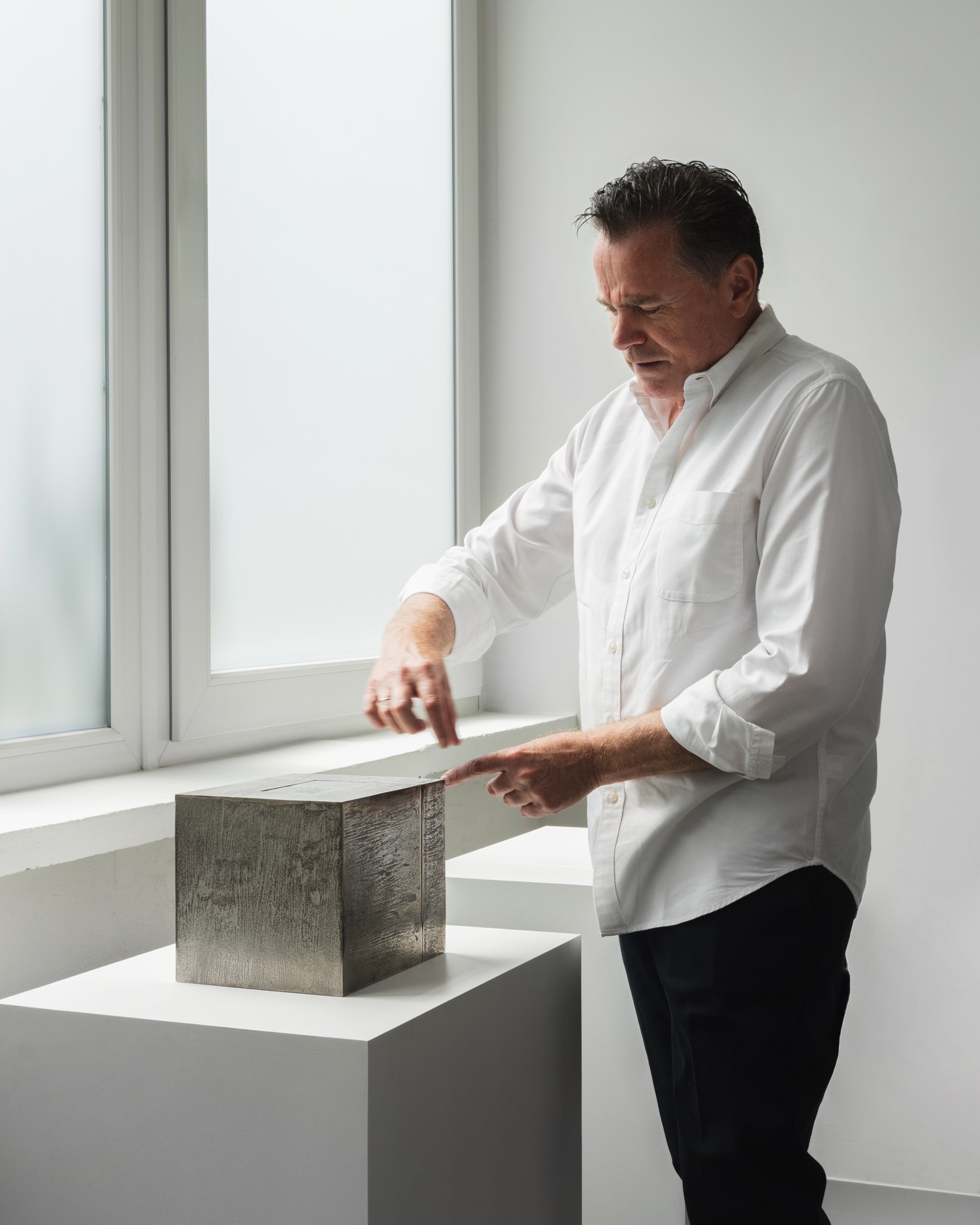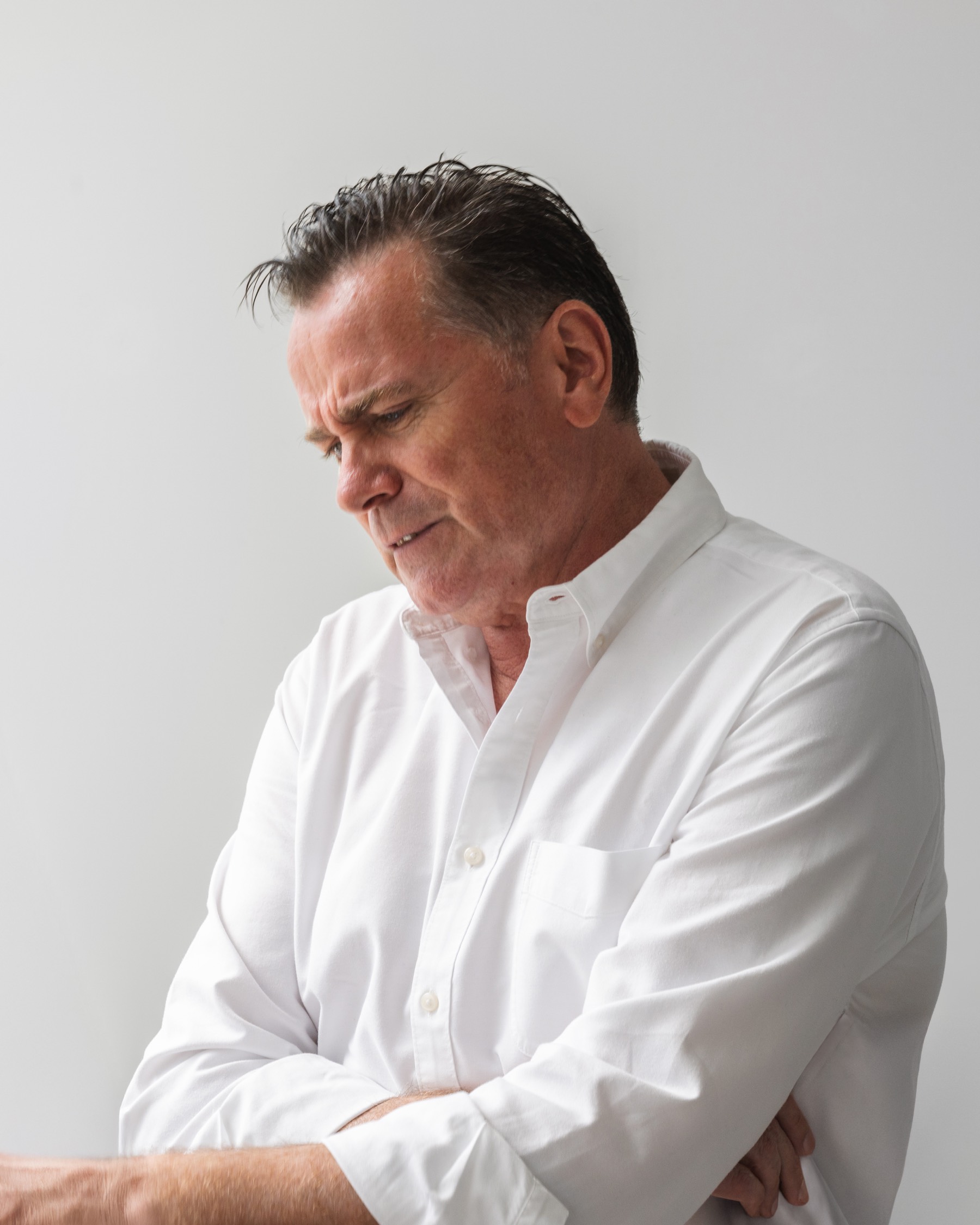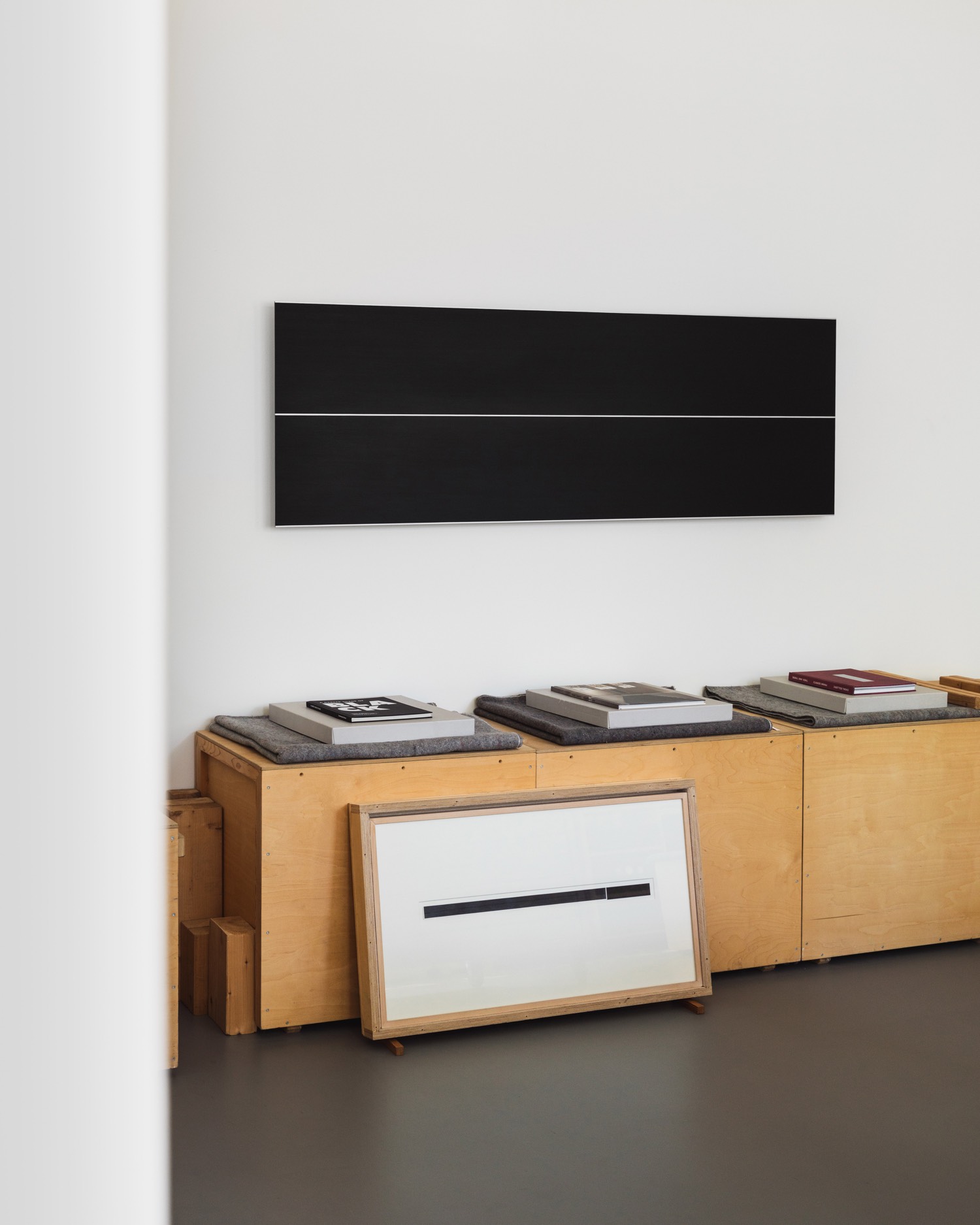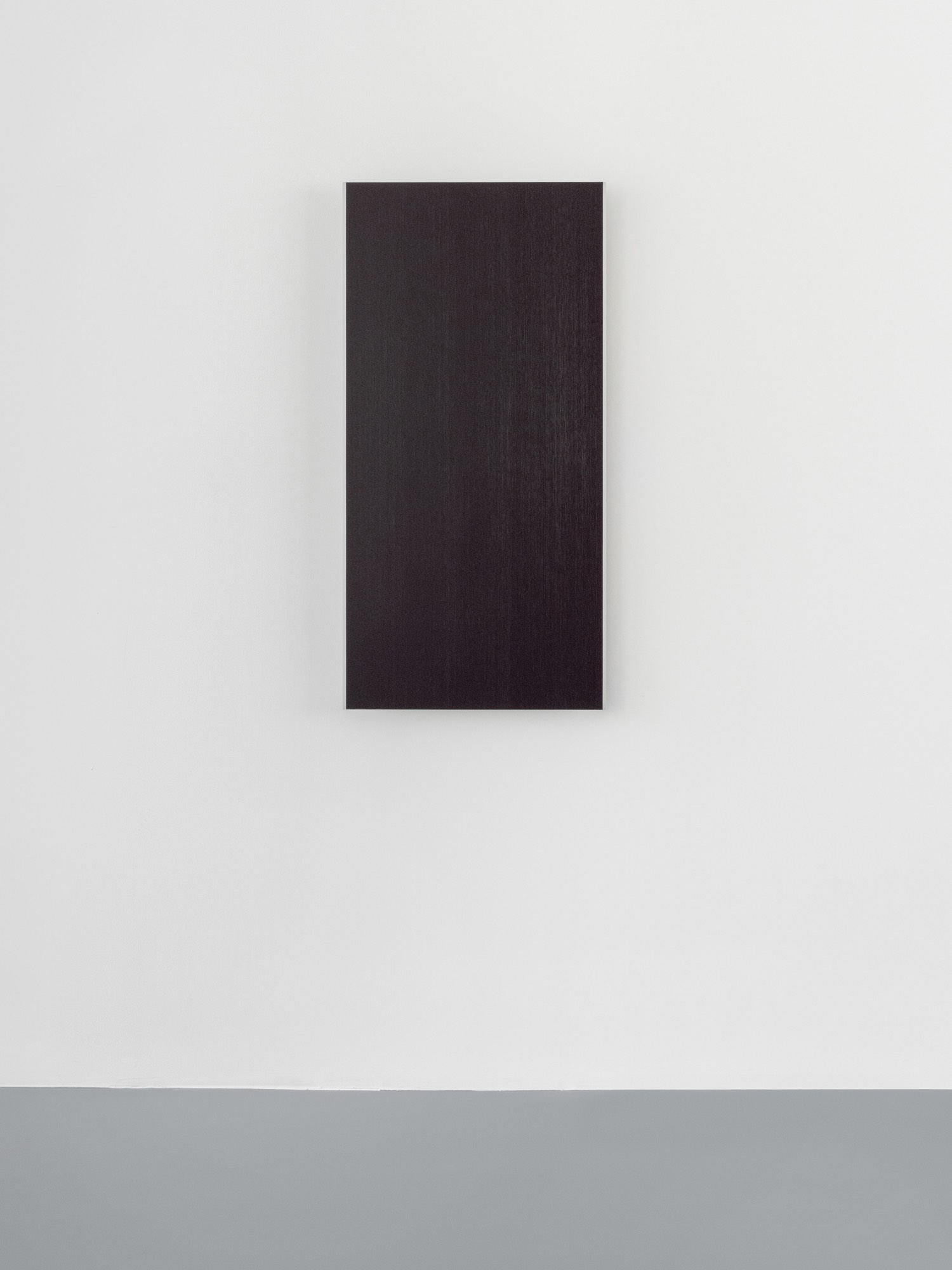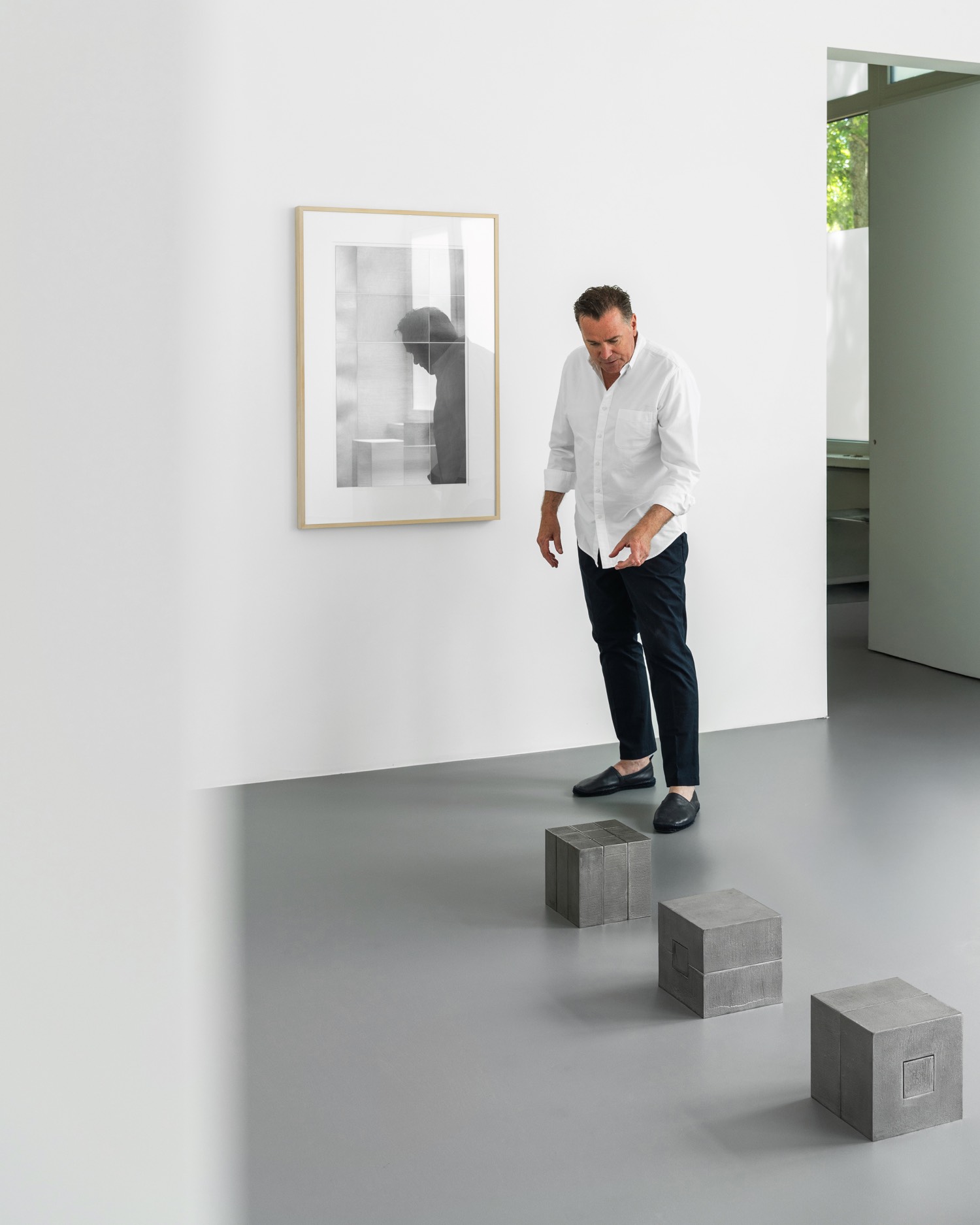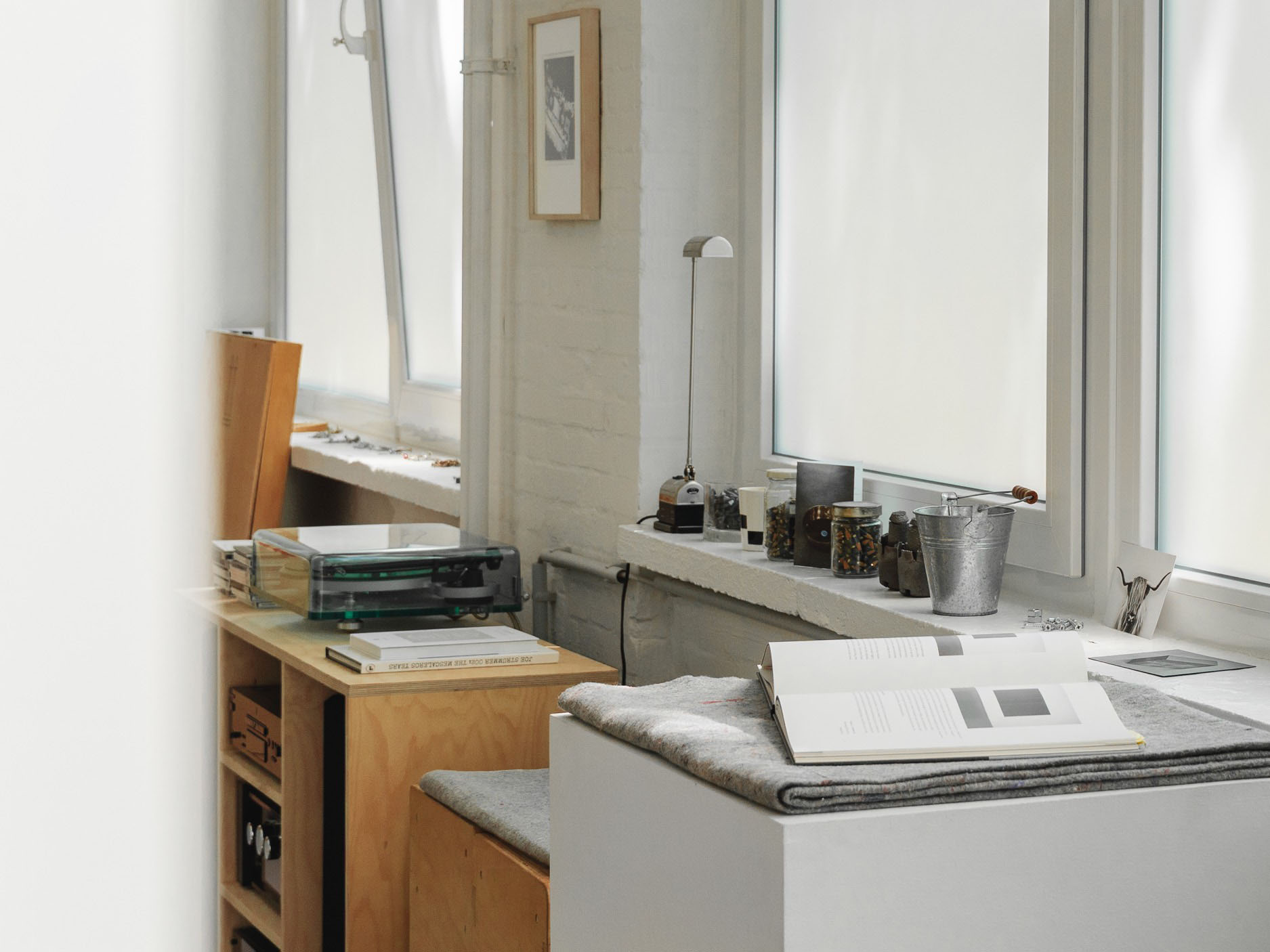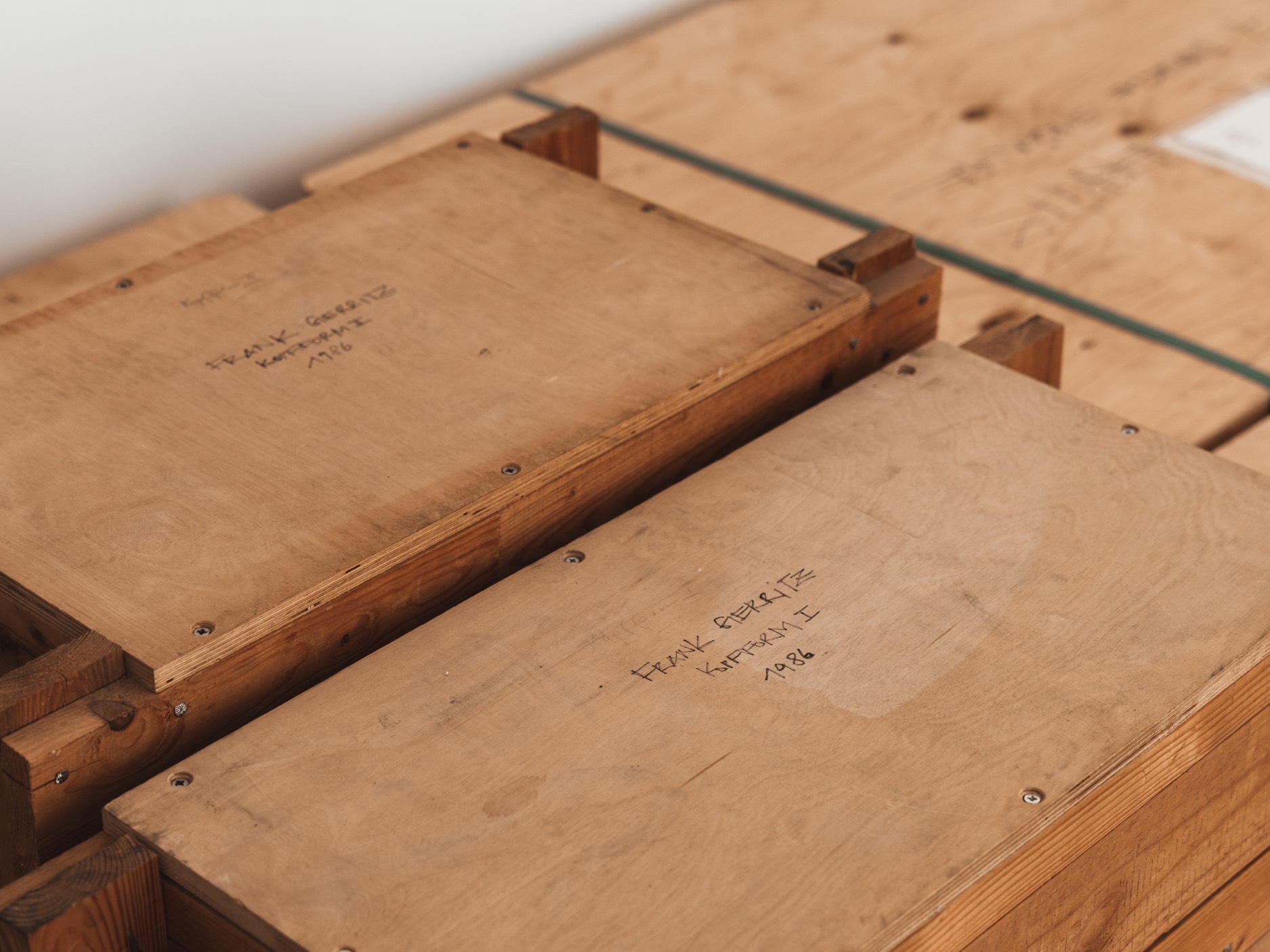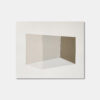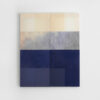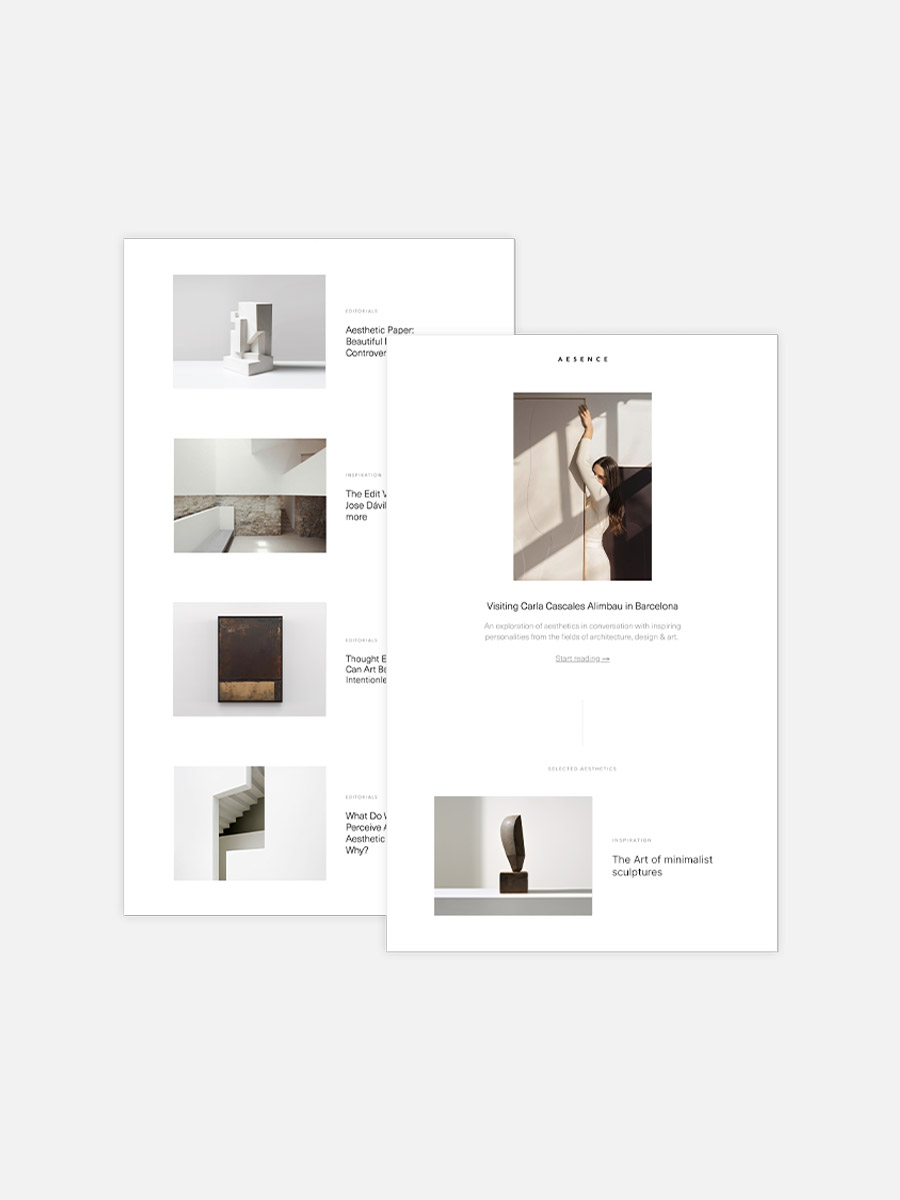It was one of the first hot days of the summer, 34° C (approx. 93° F) in the shade. As we drove from Berlin to Hamburg on an unusually empty highway, we were heading to visit the German artist Frank Gerritz. I was familiar with some of his works from art fairs and Instagram, and every time I saw them, they captivated me – powerful yet so understated. I was excited but also a little tense.
Around noon, we arrived at his studio, where he welcomed us warmly at the large door. What looked like a normal industrial building from the outside turns out to be a bright, spacious work and exhibition space on the inside. It was quiet. Despite the heat outside, the temperature was pleasantly cool. Daylight shone through the large frosted windows, where the shadows of the leaves were outlined. The Japanese call this Komorebi – the play of sunlight filtering through the leaves. It bathed the studio in a unique, almost meditative atmosphere. Large, precisely cut stencils lay on the floor, measured and prepared by an architect specifically for new floor sculptures “which will find their new place here in the next few days,” as Gerritz mentioned in passing. Several white pedestals lined the window front, displaying geometric, minimalist sculptures.
Frank Gerritz, born in Hamburg in 1964, is one of Germany’s most important conceptual artists. He is known for his radically minimalist works, which follow strict geometric principles and combine industrial materials such as iron, MDF, anodized aluminum, and graphite. As a teenager, he gained his first artistic experience working for a stonemason. “I worked there during the holidays when I was 14, setting gravestones and doing classic craftsmanship,” he recalls. He then studied art until one day a book by Constantin Brâncuși finally led him to sculpture. “I almost didn’t want to return the book because it had such a profound effect on me,” he remembers this formative moment.
Inspired by that clear formal language, Gerritz created his first sculpture, the Kreuzschale (Cross Bowl), in 1985 under the guidance of the stonemason from his youth. This was followed by works modeled on the human head1, which he gradually reduced until he arrived at the cube in the late 1980s. From this radical reduction emerged the Block Series, whose dimensions are inspired by his own body proportions. “What interests me most is the relationship between space and body – and how reduction opens up new dimensions,” says the artist. The blocks only develop their full meaning in interaction with each other: their deliberate arrangement, overlaps, and proximity create an immaterial center, a space that exists beyond the physical structure. “The thought can exist outside the form,” as he emphasizes. In 1988, he produced the first Standflächendrucke2 (floor space prints) – prints of the undersides of the blocks, which transfer the sculptures’ energy onto paper, establishing the basis for his further work.
By the end of the 1980s, Gerritz took a decisive step toward international recognition. Armed with a portfolio of sketches and photographs of his Block Series, he traveled to New York, where his vision found resonance. His efforts culminated in his first solo exhibition at the Stark Gallery in March/April 1991, which displayed a sculpture installation and marked his entry into the international art scene. Only a year later, in 1992, Gerritz created the Column Drawing3, where he transformed a column in the middle of the exhibition space into a site-specific artwork. This piece became a defining moment in his career – praised as “one of the most radical works,” it cemented Gerritz’s reputation as an artist who redefines space through reduction.
I’m particularly interested in the relationship between space and body – and how reduction opens up new dimensions.
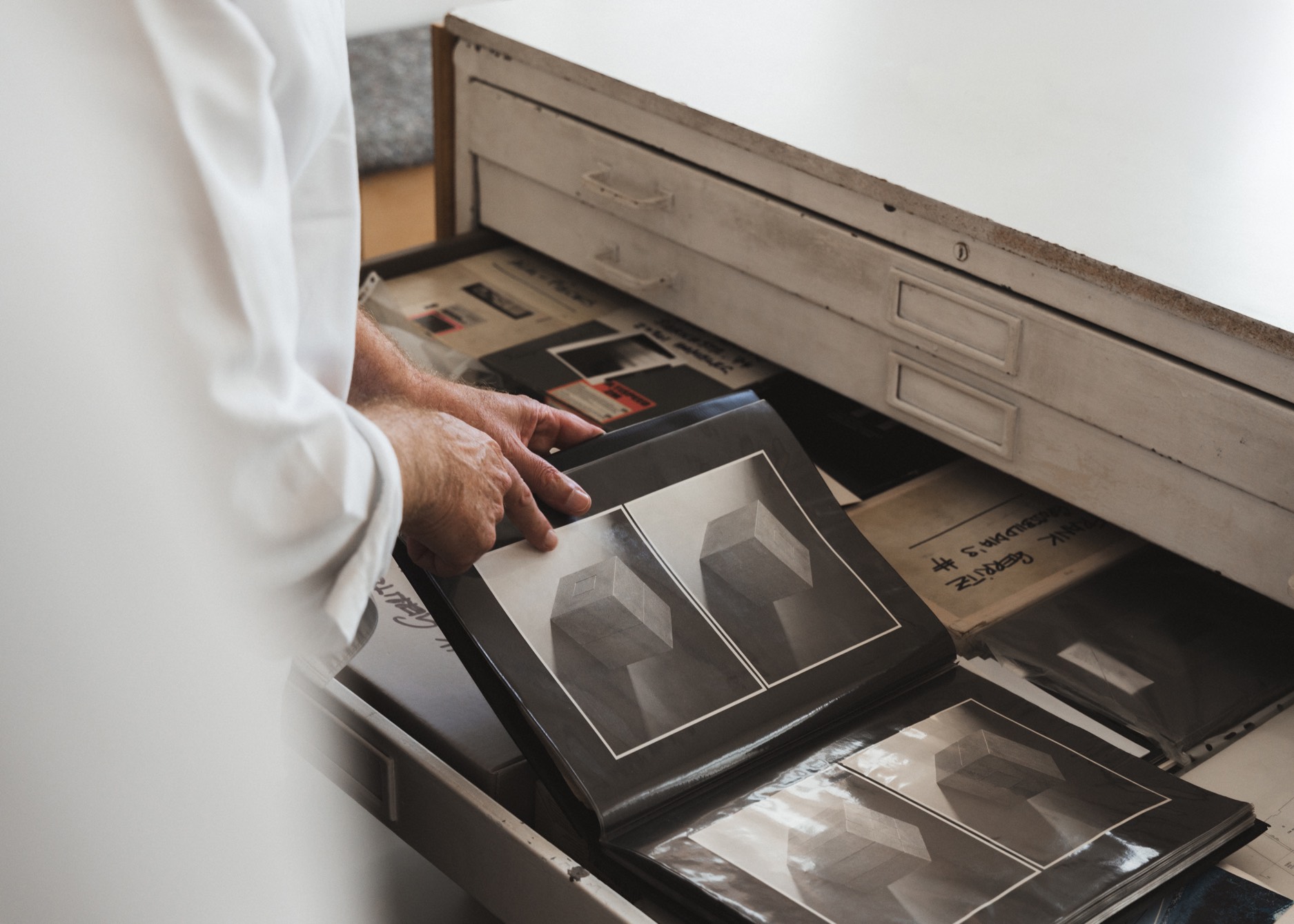
We moved slowly through the studio and entered a smaller room at the back of the building. In the center stood a large file cabinet, surrounded by drawings, transport crates, books, and archival materials. On the windowsill, various objects were lined up like mementos: small decorative items, jars filled with used pencil stubs, a record player on a small shelf. Drawings, works done with paintstick, as well as a piece Gerritz was currently working on, hung on the walls. Everything has its place here and is positioned in such a way that it seems to communicate with each other.
Gerritz’s art is, above all, a dialogue – it does not exist autonomously but always in relation to the viewer and the space. In his Rough Cuts4 series, for example, he explores “how the artwork interacts with its architectural surroundings,” as he tells us. Here, precise 2mm gaps serve as structural lines that separate the drawn sections from each other and extend into the space itself, blurring the distinction between drawing and architecture. This integration makes the artwork an intrinsic part of the space rather than a separate object within it, inviting viewers to experience the room as a continuous extension of the art. But he also consciously incorporates architectural features, transforming spatial constraints into creative opportunities. “Most of the time, I work precisely with what disturbs me. I don’t hide imperfections, but integrate them; this contributes to the authenticity of the work.”
Most of the time, I work precisely with what disturbs me. I don’t hide imperfections, but integrate them – this contributes to the authenticity of the work.
Through his dense layers of graphite on MDF and paper and his paintstick work on anodized aluminum, Gerritz refined a minimal vocabulary that defines his artistic identity to this day. Layer by layer, he applies fine coats of graphite, creating a reflective surface. The drawing process resembles a meditative act: over weeks and months, the surface is worked on continuously, with the artist as a center standing directly in front of it, each line precisely drawn, never taped off, always freehand. “It’s not about perfection, but about the precise translation of a clear thought,” says Gerritz, describing his intensive working process. “You have to be in good physical and mental shape to work on these large surfaces with a pencil every day.”
On the studio walls, those works revealed their powerful presence: black surfaces that shifted between a velvety matte and a subtle shimmer, reflecting the light with fine metallic nuances. As we moved, they seemed to move with us, offering fragmented glimpses of our silhouettes. It felt less like simply observing the works and more like engaging in a quiet encounter with them. “When you stand in front of it, you can immerse yourself in this surface. The light changes everything. Sometimes it appears uniformly black; sometimes you can see every movement, every single stroke,” says Gerritz.
It’s not about perfection, but about the precise translation of a clear thought.
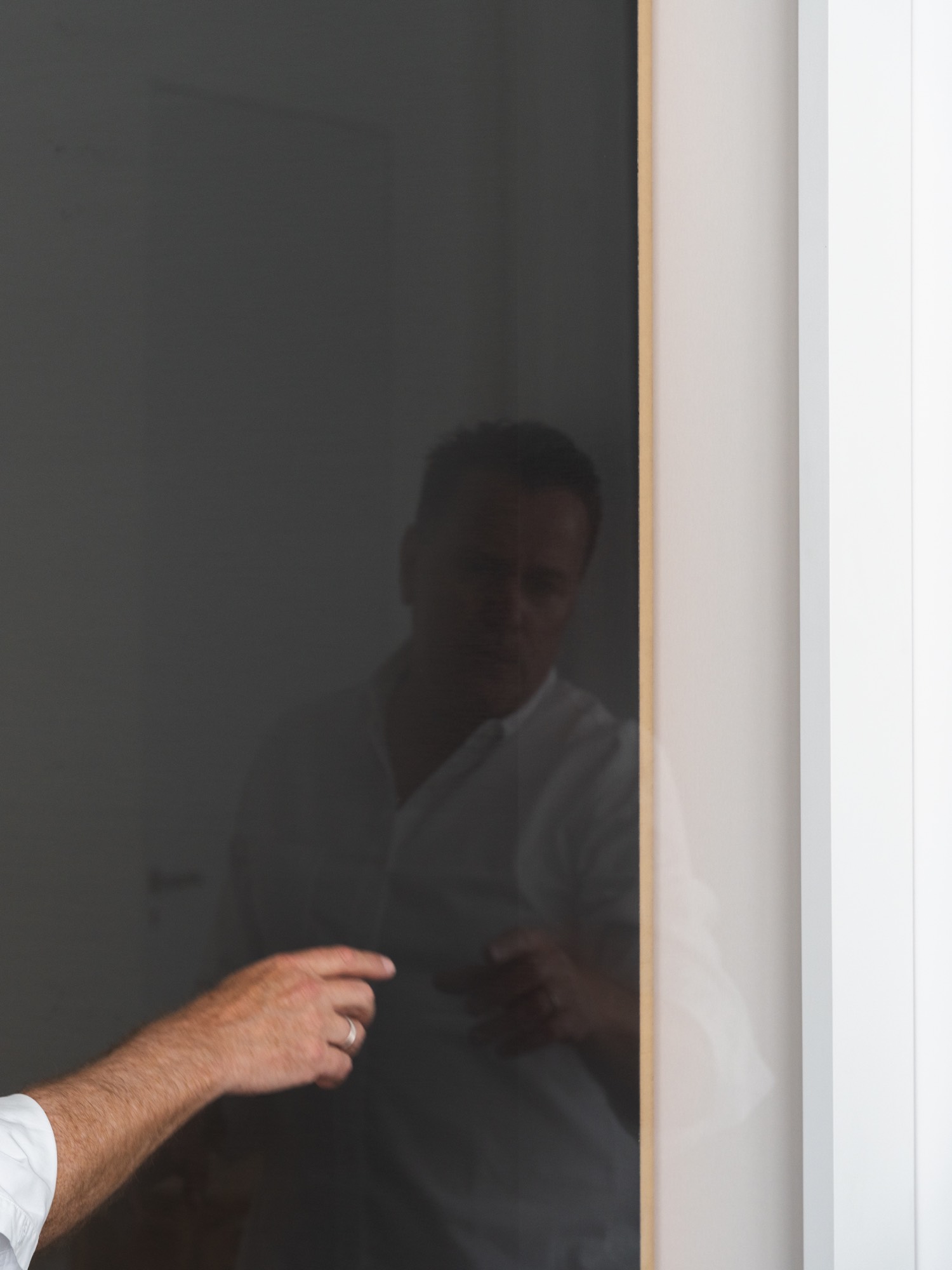
In 2010, Frank Gerritz received the Edwin Scharff Prize for his outstanding work and contribution to the Hamburg art scene, yet his international career has always been characterized by an approach that consistently subordinates commercial considerations to authenticity. Gerritz’s works are not just objects but processes – a constant questioning and redefining. “Sometimes I take old works out of my collection and enjoy them as if they were by another artist,” he says. This reflection on past works shows his ability to view himself with distance and to continuously develop his practice while remaining true to his language. His studio, which he designed himself, is more than just a workspace: it is a place of creation where light, architecture, and the artist are in constant interaction.
When we left the studio to go get ice cream together, it was still unbearably hot outside. But the quiet intensity of the moments we spent in his studio remained with me. Frank Gerritz’s works do not just fill the space, they transform it. This unique energy will stay with me long after our visit and will change the way I see his art forever. “Art only works in dialogue,” he says – and this is exactly where that dialogue began.
